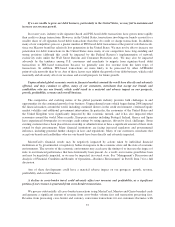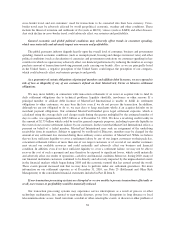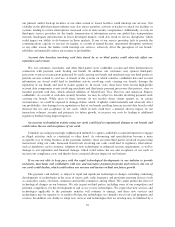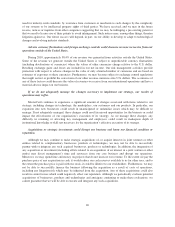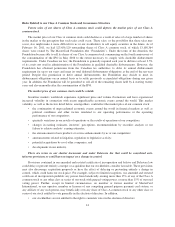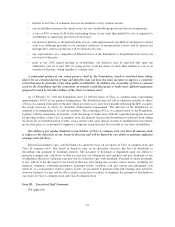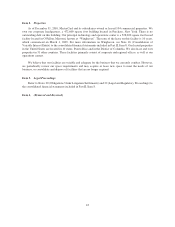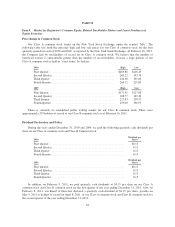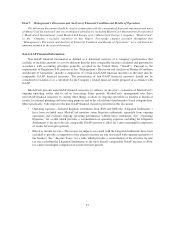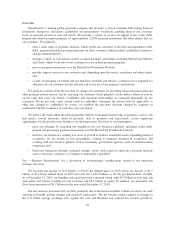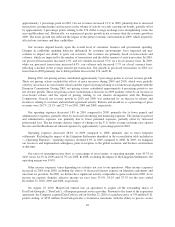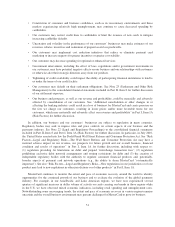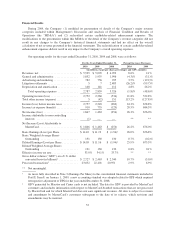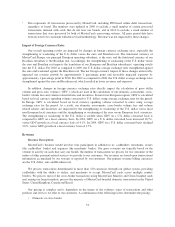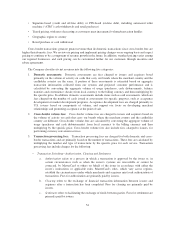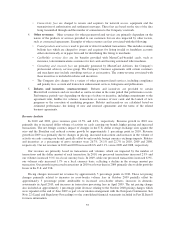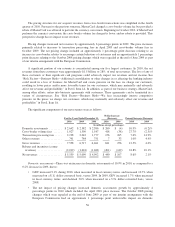MasterCard 2010 Annual Report Download - page 57
Download and view the complete annual report
Please find page 57 of the 2010 MasterCard annual report below. You can navigate through the pages in the report by either clicking on the pages listed below, or by using the keyword search tool below to find specific information within the annual report.Item 7. Management’s Discussion and Analysis of Financial Condition and Results of Operations
The following discussion should be read in conjunction with the consolidated financial statements and notes
of MasterCard Incorporated and its consolidated subsidiaries, including MasterCard International Incorporated
(“MasterCard International”) and MasterCard Europe sprl (“MasterCard Europe”) (together, “MasterCard”
or the “Company”) included elsewhere in this Report. Percentage changes provided throughout this
“Management’s Discussion and Analysis of Financial Condition and Results of Operations” were calculated on
amounts rounded to the nearest thousand.
Non-GAAP Financial Information
Non-GAAP financial information is defined as a numerical measure of a company’s performance that
excludes or includes amounts so as to be different than the most comparable measure calculated and presented in
accordance with accounting principles generally accepted in the United States (“GAAP”). Pursuant to the
requirements of Regulation S-K, portions of this “Management’s Discussion and Analysis of Financial Condition
and Results of Operations” include a comparison of certain non-GAAP financial measures to the most directly
comparable GAAP financial measures. The presentation of non-GAAP financial measures should not be
considered in isolation or as a substitute for the Company’s related financial results prepared in accordance with
GAAP.
MasterCard presents non-GAAP financial measures to enhance an investor’s evaluation of MasterCard’s
ongoing operating results and to aid in forecasting future periods. MasterCard’s management uses these
non-GAAP financial measures to, among other things, evaluate its ongoing operations in relation to historical
results, for internal planning and forecasting purposes and in the calculation of performance-based compensation.
More specifically, with respect to the non-GAAP financial measures presented in this discussion:
• Operating expenses—Selected litigation settlements from 2009 and 2008 (the “Litigation Settlements”)
have been excluded since MasterCard monitors some litigation settlements separately from ongoing
operations and evaluates ongoing operating performance without these settlements. See “-Operating
Expenses” for a table which provides a reconciliation of operating expenses excluding the Litigation
Settlements to the most directly comparable GAAP measure to allow for a more meaningful comparison
of results between prior periods.
• Effective income tax rate—The income tax impacts associated with the Litigation Settlements have been
excluded to provide a comparison of the effective income tax rate associated with ongoing operations of
the business. See “-Income Taxes” for a table which provides a reconciliation of the effective income
tax rate excluding the Litigation Settlements to the most directly comparable GAAP measure to allow
for a more meaningful comparison of results between periods.
47


